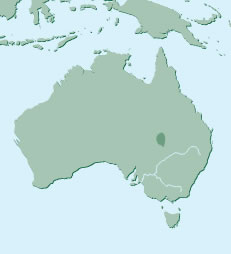Description and biology
The northern hairy–nosed wombat is also variously known as the Queensland hairy–nosed wombat or Barnard’s hairy–nosed wombat. The animal does, indeed, have a hairy nose, or muzzle. Its body is covered with a soft, silky brown coat. It has a large head, small eyes, pointed ears, and powerful legs with strong claws.
The animal’s poor eyesight is offset by its keen senses of hearing and smell. An average northern hairy–nosed wombat has a stocky body measuring 3.25 feet (1 meter) in length and weighing between 42 and 70 pounds (19 and 32 kilograms).
The animal uses its strong foreclaws to excavate a series of connected burrows called a warren. Each burrow may be 100 feet (30.5 meters) long, and each warren may have several entrances.
The animal’s home range surrounding its warren may extend over 14.8 acres (6 hectares). The northern hairy–nosed wombat feeds at night on grass, especially bunch speargrass.
The northern hairy–nosed wombat belongs to an order of mammals known as marsupials, whose young continue to develop after birth in a pouch on the outside of the mother’s body.
After a female northern hairy–nosed wombat gives birth to a single infant in summer (November to March), she carries her infant in her pouch for about six months. The young wombat nurses for almost nine months.
Habitat and current distribution
The northern hairy–nosed wombat prefers to inhabit open, semiarid (semidry) woodlands or grasslands. It generally digs its burrows in sandy soils that are supported by tree roots.
The only known surviving population of northern hairy–nosed wombats is found in the Epping Forest National Park in the northeastern Australian state of Queensland. Biologists (people who study living organisms) estimate that their population numbers 65.
History and conservation measures
The northern hairy–nosed wombat was probably already quite rare when Europeans began settling in Australia in the late eighteenth century. By 1909, it was considered extinct. In 1937, however, a small group of the animals was discovered west of the city of Clermont in east–central Queensland.
The area inhabited by these remaining wombats was declared a national park in the 1970s. At first, the animals were not fully protected, as cattle in the park grazed on the wombat’s food source. Although steps have been taken since then to eliminate cattle from the park, the number of surviving northern hairy–nosed wombats continues to be very low.

